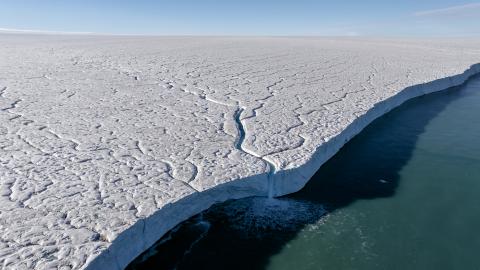Russian-Chinese cooperation in the Arctic constitutes a challenge to all Arctic NATO member states. Nevertheless, so far national defense priorities do not reflect that the Arctic is undergoing strategic normalization as Moscow continues its economic development and military buildup assisted by Chinese economic and technological assets. The limited defense budgets of NATO’s Arctic member states make it difficult to meet the demand for military armament in a region where extreme weather conditions and vast distances require specialized equipment and forces. The 2024 US Department of Defense Arctic Strategy recognizes the need for better monitoring, deterrence against Russian-Chinese strategic cooperation, and cooperation between NATO’s Arctic allies to acquire capabilities that strengthen the regional force posture of trans-Atlantic allies.1 The coming years will show if the United States and its Arctic allies manage to close the gaps in NATO defenses and establish credible deterrence of Russia and China.
Russia and China’s Overlapping Arctic Interests
Russia’s 2022 invasion of Ukraine has intensified Moscow’s Arctic dilemmas. Russia is considered a threat that can trigger NATOs Article Five collective security commitment, meaning that an attack against a member state is an attack on the alliance. Russia’s status as an adversary of NATO will almost certainly endure, incentivizing Moscow to redirect its economy away from Europe and North America towards Asia and the Global South. Russia focuses on strengthening cooperation with China. The strategic partners work on expanding Russia’s Arctic infrastructure, allowing them to capitalize on the transportation potential of the Northern Sea Route.
The route constitutes Russia’s national maritime waterway from the Barents Sea near northern Norway in the west to the Bering Sea near the US coastline in Alaska in the east.2 At the western entrance to the Northern Sea route, most of Russia’s nuclear-powered and nuclear-armed submarines are stationed. At the eastern entrance to the Northern Sea Route, Russia’s Pacific Fleet is headquartered. Melting sea ice makes the route increasingly viable for commerce. However, enhancing the commercial utility of Russia’s Arctic coastline also increases Russia’s strategic vulnerability.
China and Russia do not share geopolitical agendas. Russia predominantly uses hard and hybrid power and political influence to establish a strategic foothold from West Africa to the Middle East and from the Mediterranean to the Arctic. China predominantly uses economic and hybrid power and political influence to establish a strategic foothold in all the world’s regions. In contrast to Russia, the Arctic region is low on the Chinese list of priorities. North America, Europe, Asia, and the Global South all rank higher on the Chinese agenda. China has little interest in opening another flank towards the United States and its allies requiring major resources and attention. China has plenty of other hot spots that are much more important to Chinese interests, such as the Taiwan Strait, the Korean Peninsula, the South and East China seas, Central Asia, South Asia, and the South Pacific, just to mention some of the regions giving rise to security challenges seen from Beijing’s perspective.
Unaccustomed to using hard power for international conflict resolution and faced with a corruption-ridden People’s Liberation Army, China lacks the warfighting experience and the internal organization to rely on the use of hard power as a means of influence in areas far from China’s home region. Indeed, Beijing praises itself for its economic growth and development focus as key to its global influence in the post-Cold War international system.
Instead of direct participation in Arctic militarization efforts likely to increase the number of security challenges China is facing, it has a major interest in investing economically and technologically in Russia’s Arctic region. Russian-Chinese Arctic cooperation benefits China economically and helps to ensure that Russia continues to pose a hard power threat to the United States and its Arctic allies. This strategy aims at taking some of the heat off Beijing’s numerous security challenges closer to home and profit from cooperating with Moscow on resource extraction and infrastructure development.




















